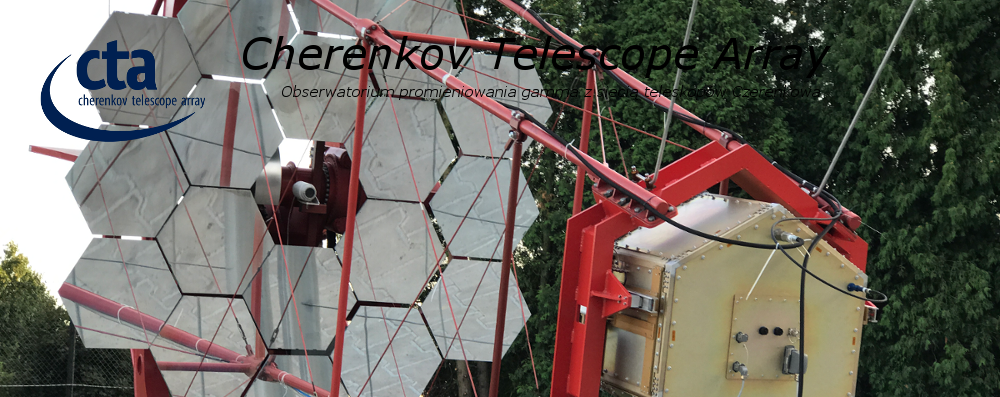The prototype of the Small-Sized Cherenkov Telescope (SST-1M) is created in its entirety in Poland and Switzerland with significant input from the Czech Republic and lesser input from Ukraine and Ireland. A network of such telescopes is planned as one of the main elements of the southern CTA observatory and will consist of 70 small telescopes.
The current advanced prototype of the SST-1M telescope is, in the opinion of many scientists, the best design for a small telescope in the CTA, with its standout simple mechanical design on one side, and on the other, the most modern solution for the camera with ultrafast digital electronic DigiCam and the use of new research in semiconductor photomultipliers (built especially for this project by Hamamatsu).
Small telescopes (SST, Small-Sized Telescope) of the Cherenkov Telescope Array (CTA) observatory will have single mirrors with a diameter of 4 meters.
The proposed solution is universal (resistant to changes in external conditions) for planned measurements and highly reliable, as confirmed by tests in September 2017.
Method of Operation
The SST-1M telescope prototype built in Poland is equipped with Davies-Cotton’s optics, which consists of a spherical canopy with mosaic mirrors (composed of 18 elements).
The mirrors focus the light of a shower of particles directly on the telescope’s camera, which is why it is also called a one-mirror telescope.
The Davies-Cotton design offers a simple and inexpensive way to eliminate optical aberrations that adversely affect the obtained bunched-up rays (the size of the diffraction spot of the telescope) and is therefore a widely accepted solution in currently operating terrestrial observatories of gamma astronomy.
SST-1M uses an innovative camera based on silicon photomultipliers (SiPM). In contrast to standard photomultipliers, SiPM can also work during moonlit nights. The SiPM reading is based on a fully digital and programmable DigiCam approach, similar to FlashCam, but matching the smaller camera body.
The team (“network”) of small telescopes will be optimized to collect gamma-ray photons with the highest energies, up to around 300 TeV.
Additional Information
Polish team of engineers from the H. Niewodniczanski Institute of Nuclear Physics of the Polish Academy of Sciences in Krakow is responsible for:
- mechanical construction design of the small telescope,
- construction of the prototype,
- construction of the telescope’s drive.
The prototype telescope (SST-1M) has a 4 m diameter dish, a 5.6-meter focal length and a field of view (with a planned camera) of 9 degrees.
The prototype with these parameters will allow for the development of modern construction solutions, while also optimizing the costs that are important for such a large project as CTA.
The advantages of the Polish construction are:
- Application by the Polish team of drive systems based on two independent screw-worm gears with a bearing. The prototype of this drive was previously used by the German team from DESY to build a medium telescope. Using the same drive concept will facilitate production for Cherenkov Small and Medium-sized telescopes.
- The use of commercially available steel profiles and telescopic masts in the construction. Their structure is tested and optimized using computer models. The analysis takes into consideration loads and stresses related to wind, snow, ice on the telescope and earthquakes. The goal, ie the optimization of the costs of constructing a small telescope, is carried out in close cooperation with the industry, mainly with subcontractors from Poland.
- Creating a small telescope design considers total costs, ie takes into account the price of its transport and assembly at the construction site at the CTA observatory. This is possible due to, among other things, application of commercially available profiles, repeatability of elements within the entire observatory project, use of elements that do not require welding on site, and their transport in standard-size shipping containers.
All designs of Cherenkov Small-sized Telescopes are described on the CTA website.
